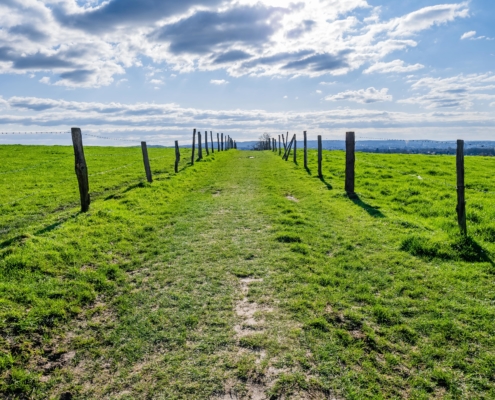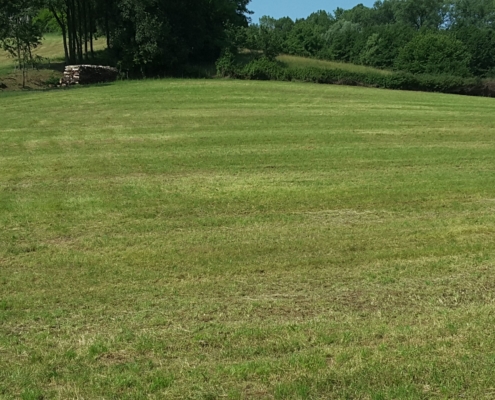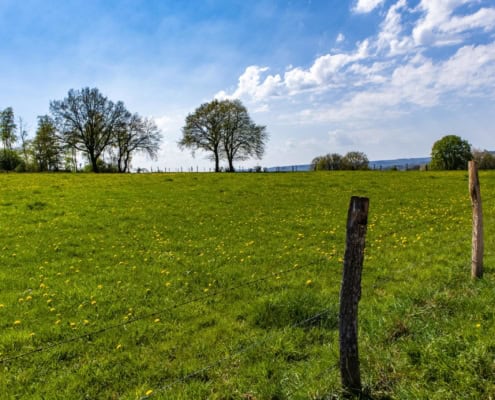The Best Time to Plant Grass Seed: A Comprehensive Guide
Find out the optimal time to seed grass so it will grow successfully in the Western United States.
Planting grass seed is a task that at first can seem confusing. This is because not all grass seeds like to grow in the same kind of climates or at the same time of year. Indeed, this means that depending on where you are in the US, some seeds are a much better choice than others.
However, even when choosing the right seed for your location, you will still need to make sure it is planted at the correct time to encourage germination and proper establishment. The good news is you can find out all about the right locations, climates, and types of grass seed below.
1. Timing Tips
Not all grasses are the same. Some grasses do better in seasons when it’s cool, while others prefer warmer seasons.
For instance, some grasses will grow much better in northern climates, toward the end of the summer and into the very beginning of fall, when the temperature is cooler. These are known as cool-season grasses. Grasses included in this group are:
- Perennial Ryegrass
- Kentucky Bluegrass
- Tall Fescue
However, grasses that enjoy a warmer, and thrive towards the end of spring into early summer include:
- Bermudagrass
- Bahiagrass
- Zoysia Grass
- Centipede Grass
These warm-season grasses much prefer a climate in the more southern and western regions of the US.
What this means is that if you want your grass to germinate and grow well you need to first find out the season that your grass does best in and then match this to your location. In essence, you have to get the timing right if your grass is to thrive.
2. A Guide To Cool Season Grasses
If you are wondering when to sow grass seed, Fall is without doubt the best time to plant cool-season grass for many reasons. discover them below.
Soil Temperature
The first reason to plant cool-season grass in the Fall is warm soil. Yes, that’s right, while it may sound odd, the truth of the matter is that a grass that does better in the cool also needs warm soil to successfully germinate.
The benefit of planting during fall is that the soil remains warm and unfrozen, while the air temperature ranges from around 60°F to 75°F during the day. This makes it an ideal time for planting. Indeed, when the air temperature is at around 60 degrees it means the soil temp will be at least 50 degrees which is perfect for cool-season grasses. You can even invest in a soil thermometer for a reasonable price to check this before you plant.
Outdoor Temperature
Fall is also usually the best season to plant cool-season grasses because of the overall temperature. However, you will need to do a little homework for your location to confirm this. What you need to find out is when your first frost is expected. You can get this information from your county extension agent as they should keep accurate records on this.
Once you have that information you need to plan your grass seeding for a minimum of 45 days before this first frost is expected. This is because this will ensure your grass’s roots get well established in the ground before temperatures drop too drastically.
Moisture
Fall is also the most preferred season to sow cool-season grasses because of the increased soil moisture. After all, we can usually expect more rain during autumn, and this will prevent your seeds from drying out. A bonus is that it will cut down the need to water your lawn by hand, which can make choosing cool-season grasses a lot easier, as long as you plant them at the right time.
Cool-Season Grass Seed by Location
You’ll need to plant your cool-season grass seed nice and early if you live in the northern United States. For example, Minnesotans will find the best time for cool-season grass seed is from the middle of August to the middle of September. However, those in central and northern Arkansas, which is in the transition zone, will find the best time to see cold season grasses is between September and October if they want their lawn to be lush and establish quickly.
3. A Guide to Warm-Season Grasses
Spring is always the best time to sow warm-season grass seed, and the reasons for this are as follows:
Soil Temperature
A consistently warm soil temperature of at least 65 to 75 degrees Fahrenheit will be needed for germination of a warm-season grass. This means warm-season grasses need to be planted when the air temperature is around 80 degrees Fahrenheit, which is usually in the Springtime.
Moisture
Spring is a traditionally rainy season which means warm-season grasses should get all the moisture they need if you plant them in late spring – early summer.
Outdoor Temperature
Unlike cold-season grasses, which need to be planted 45 days before the first frost, warm-season grasses need double the time. This means they need a full 90 days before the first frost at a minimum to thrive. The reason for this is that warm-season grasses pass into dormancy if the temperature falls below 55 degrees Fahrenheit, so if you plant during or before a cold snap you could risk getting no lawn at all.
Warm-Season Grass Seed by Location
Location matters when planting warm-season grass because temperatures differ in different parts of the US. With that in mind, mid-April to mid-May is the best time to sow warm-season grass seed in California.
However, late May to June is the preferred sowing time for lawn enthusiasts in central and southern Arkansas.
4. Seasonal Insights For the Western United States
Applying the knowledge that we have gathered above we can now state the best time of year in which to plant both warm-season grass seeds and cool-season grass seeds in the Western of the US.
Timing Matters: Planting Grass Seed by Location
Fall
For the following locations, choose cold-season grasses and sow in the Fall for the best results:
- Washington
- Oregon
- Northern California
- Northern Nevada
- Utah
- Colorado
Spring
For the following locations, choose warm-season grasses and sow in the Spring for the best results:
- Southern California
- Southern Nevada
- Arizona
- New Mexico
5. Expert Recommendations
One of the best things you can do to ensure that your grass seeds develop into a lush lawn is to follow the advice of those who go before you. Yes, that’s right we’re talking about the experts, and they have plenty of tips to help you achieve the thickest, healthiest lawn no matter where you are located.
Sowing A New Lawn
- Always remove any weeds before you sow
- Add additional topsoil if the quality needs improving
- Use a seed spreader tool to sow at the proper rate
- Be sure to rake in the seed after sowing
Overseeding An Existing Lawn to Cover Bare Patches
- Clear the area of dead grass before you sow
- Rake the area to loosen up the soil
- Sow the seeds between 5mm and 10mm below the surface
- Use a roller to firm the seed down so it maximizes contact with the soil
Looking After Grass Seedlings Once They Are Planted
- Water your lawn plentifully for at least 6 weeks, unless it’s raining
- Do not mow your lawn until the new grass seed has reached 5cm
- Regularly fertilize your lawn to ensure its best chance of growth
5. What To Expect From Newly Planted Grass Seed
Not all grasses germinate at the same speed. Some like Zoysia grass take much longer to fully establish, whereas Tall Fescue varieties can germinate much faster. However, it is important to make sure any grass you grow becomes well established so it can receive the right nutrients, and stand strong against weeds and pests.
As a general rule, you can expect to see some growth as early as 7 days from seeding up to around 21 days. However, your grass is still likely to be at least 3 weeks away from its first mow.
Remember that because of this, if you are sowing grass seed in the Fall, you may need to hold off mowing it until the following spring.
Final Thoughts
The best time to plant grass seed depends on where in the country you are located and the type of grass seed you are using.
For example, if you are in a more northern location, choosing a cold-season grass seed, and planting it in the Fall is better. Alternatively, as a rule, if your location is more southern, then choosing a warm-season grass seed and planting in the spring is best.
However, if you find yourself in the north with warm-season grass then spring will be the best planting time, and in the south with cold-season grass, plating it in the fall will give it the best chance of survival.




